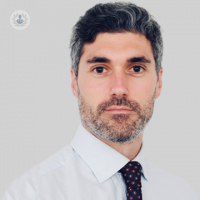What is minimally invasive glaucoma surgery?
Written by:Glaucoma is a common eye condition, that occurs when the optic nerve is damaged. It is often caused by high pressure within the eye, and can lead to blindness if not treated promptly. In our latest article, leading ophthalmologist Mr Francesco Stringa explains minimally invasive glaucoma surgery (MIGS), a group of treatments that are used to treat glaucoma without major surgery.

What is the aim of minimally invasive glaucoma surgery?
High pressure in the eye is the main risk factor for glaucoma. Minimally invasive glaucoma surgery (MIGS) is a group of procedures and devices which aim to reduce and normalise eye pressure. Additionally, as the use of eye drops for treating glaucoma can cause long term side effects and discomfort, MIGS can help to reduce the number of eye drops required to control the pressure. This can improve the quality of life of the patient.
What makes MIGS minimally invasive?
MIGS allows for improvement of the outflow mechanisms of the eye, avoiding major alterations in normal ocular anatomy. Different types of MIGS have different ways of reducing pressure in the eye, but what they have in common is a quicker recovery compared to standard glaucoma surgery (for example, trabeculectomy and “tube surgery”), with minimal additional downtime for patients.

How do MIGS devices reduce pressure in the eye?
MIGS device can reduce the eye pressure in two ways
- Ab-externo: by creating an “alternative pathway” for the fluid in excess to be drained into a small blister (called a bleb) under the conjunctiva (the surface of the eye), and under the upper eyelid.
- Ab-interno: by improving the outflow of the natural drainage canal of the eye. This can be achieved with stents (for example, iStents and Hydrus) or by expanding the drainage system with a gel (viscoelastic) that is then naturally reabsorbed.
Is it a safe procedure?
MIGS have an overall better safety profile than conventional glaucoma surgery. They involve less manipulation of the tissues, less follow-up visits and faster recovery. Ab-interno procedures are generally considered to be safer than ab-externo procedures. Common possible side effects are a transient spike of pressure, temporary bleeding and blurry vision. These usually resolve in the first postoperative week or so.

How long does the procedure take, and what’s involved in recovery?
Most MIGS take approximately 20-30 minutes and they are performed under local anaesthesia in the operating theatre. The postoperative period involves a few weeks’ course of antibiotics and anti-inflammatory eye drops. The eyesight might be slightly blurred during the days immediately after surgery. If glaucoma drops are used before surgery, it is generally recommended to continue using the same drops until the follow-up visit with your surgeon, who might consider reducing them gradually over the following weeks.
If you are worried about glaucoma or any other eye conditions, you can book a consultation with Mr Francesco Stringa via his Top Doctors profile today.


